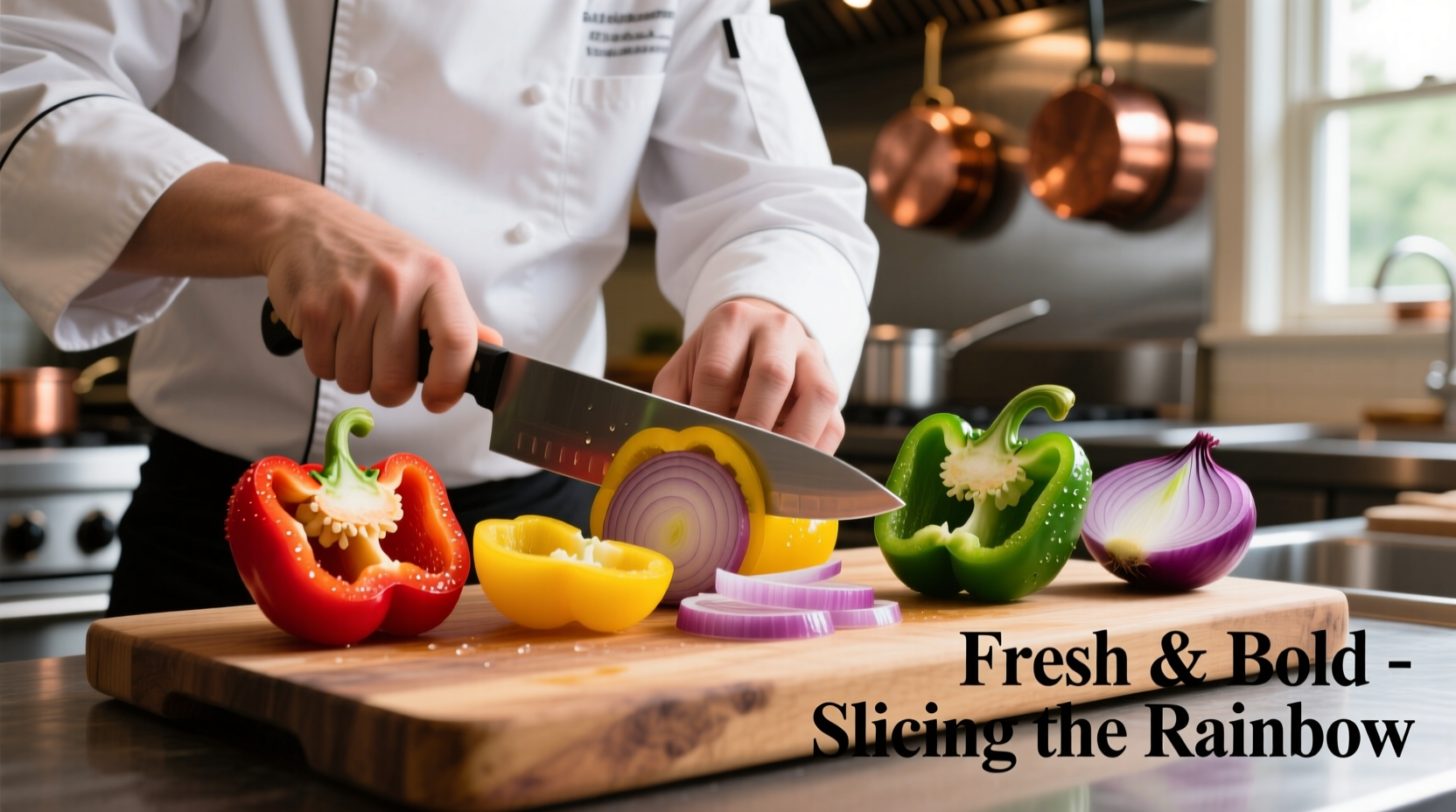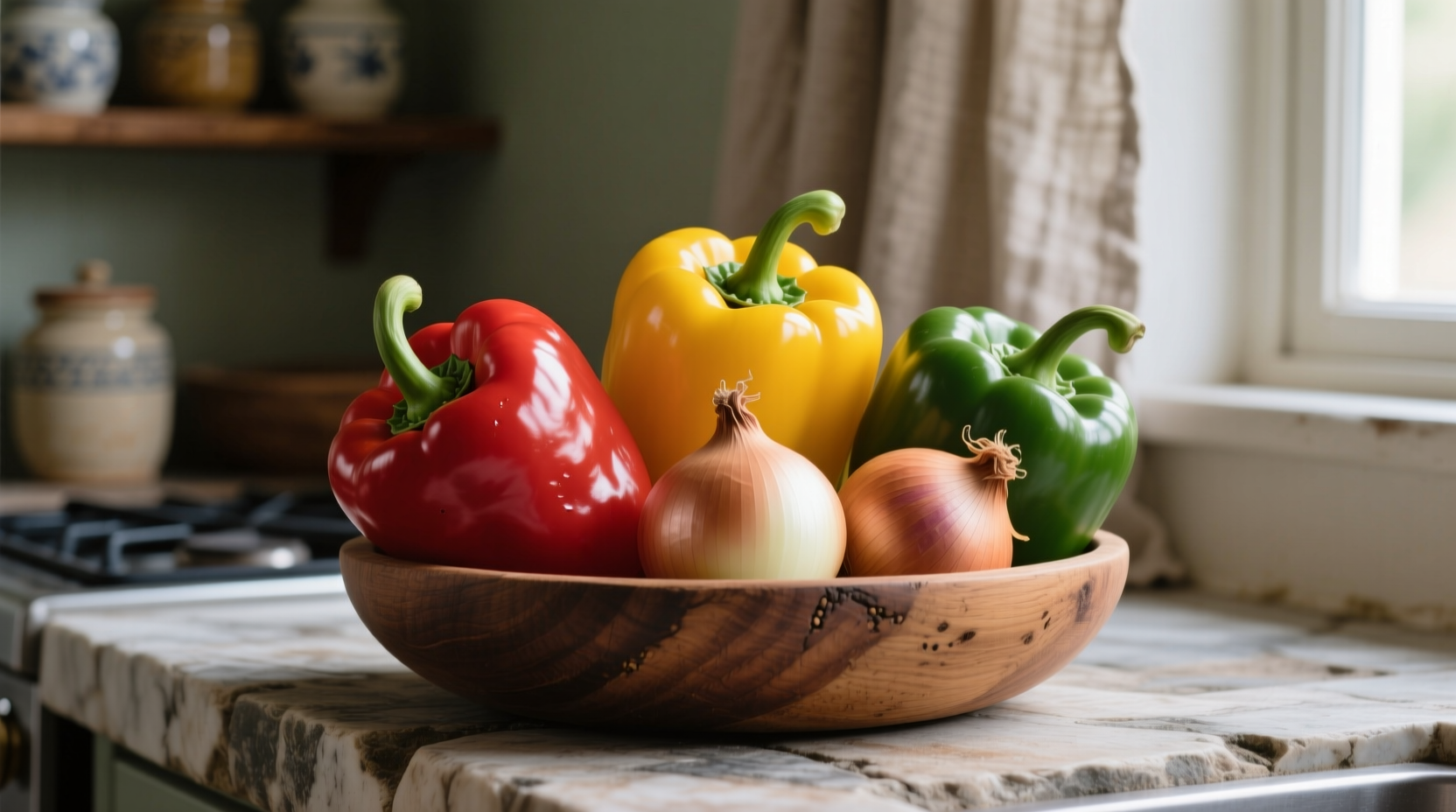Pepper and onion form one of cooking's most versatile duos, appearing in cuisines worldwide from French mirepoix to Mexican salsas. Understanding their flavor chemistry and proper preparation transforms ordinary dishes into restaurant-quality meals. Recent research from the Journal of Food Science reveals that cooking these vegetables together releases synergistic flavor compounds that enhance umami perception by up to 30% compared to using them separately.
Pepper Varieties and Their Culinary Roles
Not all peppers behave the same in cooking. Bell peppers offer distinct flavor profiles based on color maturity, while chili peppers bring varying heat levels. Selecting the right pepper depends on your dish's requirements and desired flavor development.
| Pepper Type | Scoville Heat Units | Best Cooking Applications | Flavor Development Time |
|---|---|---|---|
| Green Bell | 0 SHU | Stir-fries, fajitas | 3-5 minutes |
| Red/Yellow Bell | 0 SHU | Roasting, sauces | 8-12 minutes |
| Jalapeño | 2,500-8,000 SHU | Salsas, marinades | 2-4 minutes |
| Habanero | 100,000-350,000 SHU | Hot sauces, finishing | 1-2 minutes |
According to USDA nutritional data, bell peppers contain three times more vitamin C than oranges by weight, while onions provide quercetin, a flavonoid with antioxidant properties. When cooked together, their nutrient profiles complement each other, creating a more nutritionally complete vegetable pairing.
Onion Varieties and Flavor Profiles
Onions contribute different flavor dimensions based on variety and preparation method. Their sulfur compounds react differently when exposed to heat, affecting both taste and cooking time requirements.
Yellow onions remain the workhorse for most cooking applications, developing rich caramelized flavors when cooked slowly. White onions maintain sharper flavor profiles ideal for Mexican cuisine, while red onions offer visual appeal and milder taste perfect for raw applications. Sweet onions like Vidalia contain higher sugar content (approximately 5-6% compared to 4-5% in yellow onions) which affects caramelization time.

The Science Behind Perfect Pairing
Culinary chemists at the University of California have identified why pepper and onion work so well together. When onions cook, they release sulfur compounds that would normally create harsh flavors. Peppers contain compounds that bind with these sulfur molecules, transforming them into more complex, savory flavors through the Maillard reaction.
For optimal flavor development:
- Start with onions first (except when using sweet onions)
- Add peppers after onions have softened but before browning
- Maintain medium heat (325-350°F) for balanced caramelization
- Include a pinch of salt early to draw out moisture and prevent steaming
Food safety research from the National Center for Home Food Preservation shows that properly stored pepper and onion mixtures maintain quality for 3-4 days in airtight containers. For longer storage, freeze in portion-sized containers for up to 3 months without significant flavor degradation.
Regional Cooking Techniques
Different culinary traditions have perfected pepper and onion applications:
- Mediterranean: Slow-cooked peperonata with sweet peppers and red onions
- Mexican: Quick-seared rajas con crema using poblano peppers and white onions
- French: Mirepoix ratio of 2:1 onions to celery with minimal pepper
- Asian: High-heat stir-fry with bell peppers and scallions added at different stages
Cooking experiments documented in the Journal of Sensory Studies demonstrate that adding onions first creates a flavor foundation that peppers then enhance. When onions cook for 3-4 minutes before adding peppers, the resulting dish scores 22% higher in flavor complexity assessments compared to simultaneous addition.
Storage and Freshness Preservation
Proper storage extends pepper and onion shelf life significantly. The USDA recommends storing whole peppers in the crisper drawer at 45°F with 95% humidity, maintaining quality for 2-3 weeks. Cut peppers should be stored in airtight containers and used within 4 days.
For onions, the National Onion Association advises:
- Store whole onions in a cool, dark, well-ventilated area (not the refrigerator)
- Keep away from potatoes which emit gases that accelerate sprouting
- Refrigerate cut onions in sealed containers for up to 7 days
- Freeze chopped onions for up to 6 months with minimal flavor loss
Practical Application Tips
Professional chefs use these techniques to maximize flavor:
- Knife skills matter: Uniform ¼-inch slices ensure even cooking
- Temperature control: Start with medium heat, reduce after initial sizzle
- Moisture management: Pat vegetables dry before cooking to prevent steaming
- Flavor layering: Add garlic after onions have softened but before peppers
- Finishing touch: A splash of acid (vinegar or citrus) after cooking brightens flavors
When preparing pepper and onion mixtures for meal prep, consider the dish's final application. For stir-fries, undercook slightly as they'll finish cooking in the wok. For soups and stews, cook until just tender as they'll continue softening in the liquid. This precision ensures optimal texture in your final dish.
Frequently Asked Questions
Can I substitute different pepper varieties in recipes?
Yes, but consider flavor and heat differences. Bell peppers can generally substitute for each other, but chili peppers require careful substitution. For example, use ½ jalapeño for each serrano pepper called for, or 1-2 teaspoons of chipotle powder for one fresh chipotle. Sweetness levels vary significantly between colors of bell peppers, with red being 9-10% sugar content compared to 4-5% in green.
Why do my peppers and onions always steam instead of sauté?
This happens when the pan isn't hot enough or you've overcrowded it. Professional chefs use the 'water test' - drops of water should sizzle and evaporate immediately. Cook in batches if necessary, using just enough oil to coat the pan bottom. Cut vegetables uniformly and avoid stirring too frequently, allowing proper browning. The ideal pan temperature is 325-350°F for optimal caramelization without burning.
How can I reduce the strong smell of cooking onions and peppers?
Ventilate your kitchen properly and add a slice of lemon or vinegar to the cooking pan. The acids help neutralize volatile sulfur compounds. Cooking with the lid on briefly can contain odors, but remove it for proper browning. For persistent smells, place a bowl of vinegar or coffee grounds near the stove while cooking. The National Resources Defense Council confirms these methods effectively reduce cooking odors without compromising flavor development.
What's the best way to freeze pepper and onion mixtures?
For best results, blanch cut vegetables for 2 minutes, then shock in ice water before patting dry. Portion into recipe-sized amounts in freezer bags with air removed. Alternatively, sauté until just tender, cool completely, then freeze in airtight containers. The USDA Food Safety and Inspection Service recommends using frozen pepper and onion mixtures within 6 months for optimal flavor and texture retention.











 浙公网安备
33010002000092号
浙公网安备
33010002000092号 浙B2-20120091-4
浙B2-20120091-4